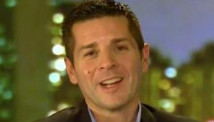BUFFALO, New York (Reuters) - A powerful winter storm pushed through the U.S. Northeast on Thursday, forcing the cancellation of hundreds of airline flights while bringing some holiday cheer to families hoping for snow and lifting spirits at ski resorts in the region.
The storm dumped a foot of snow on parts of the United States with the heaviest snow falling across northern New York and New England, the National Weather Service reported.
"It feels lovely to have wonderful snow for the kids to play in, and I think it's the kind of snow that's good for making forts and snowmen," said Katryna Nields, a musician in Conway, Massachusetts, who was outside her home shoveling snow.
"It's just the kind of snow you want for between Christmas and New Year's," she added.
The National Weather Service issued winter storm warnings for parts of Pennsylvania, New Jersey, New York and New England and coastal flood advisories from New York's Long Island to southern Maine.
Airlines canceled more than 800 flights on Thursday, according to FlightAware.com, a website that tracks flights.
Some flights into and out of the three major New York City area airports - Newark Liberty International, John F. Kennedy International and LaGuardia - were delayed due to the weather, the Federal Aviation Administration reported.
The weather service forecast 12 to 18 inches of snow for northern New England, accompanied by freezing rain and sleet, creating hazards on the highways and at airports.
More snow is headed east, said Alex Sosnowski, senior meteorologist at Accuweather.com.
"A new storm is in the works for portions of New England, the mid-Atlantic and the Ohio Valley," he said.
The new storm "will bring more snow to areas that received snow from the post-Christmas storm and will bring snow to some areas that got rain or mostly rain," he said, adding that it has the potential to strengthen to a strong nor'easter or blizzard in parts of New England.
Tom Olney, a 50-year-old stay-at-home father of two, was making plans to go sledding with his children in their hometown of Wayland, Massachusetts.
"We love snow," Olney said. "What else are you going to do when it's this wet and cold out?"
Western Massachusetts, like much of the Northeast, had an uncharacteristically mild winter last year, but residents such as Olney say they are ready for a more typical cold season.
"Mother Nature doesn't usually give you two in a row," he said. "We've still got a lot of supplies from last year, so I guess we're ready for it now."
Heavy snow was falling in Maine, Vermont and New Hampshire.
Eleven inches of snow was forecast for Buffalo, where some 8 to 12 inches of snow fell overnight into Thursday. Prior to that, Buffalo was 23 inches below average for this time of year, the weather service said.
"It's just a reminder, winter is here," said Tom Paone of the National Weather Service in Buffalo.
Daniel Ivancic, of the Buffalo suburb of Tonawanda, said he bought a snowmobile last winter that has sat largely idle with snow totals well below average.
"I waited and waited and, no snow. This winter it seemed like the same thing was going to happen until the storm hit," Ivancic said. "I'm just going to take advantage of every minute of it."
Police patrolling the New York State Thruway from Buffalo to Albany reported dozens of accidents, mostly involving cars that slipped off snowy roads overnight.
Freezing rain - making for treacherous travel conditions - was predicted for parts of Maryland, Pennsylvania, Virginia and West Virginia while significant rain was likely along the New Jersey, Virginia and Maryland coasts, the weather service said.
The storm system dumped record snow in north Texas and Arkansas before sweeping through the South on Christmas Day and then veering north.
The system triggered tornadoes and left almost 200,000 people in Arkansas and Alabama without power on Wednesday.
Authorities said an 81-year-old man died in Georgiana, Alabama after a tree fell on his home.
(Additional reporting by Betsy Pisik in Wayland, Massachusetts, Zach Howard in Conway, Massachusetts, Kaija Wilkinson in Mobile, Alabama, Colleen Jenkins in Winston-Salem, North Carolina and Dan Burns in New York; Editing by Ellen Wulfhorst and Claudia Parsons)


